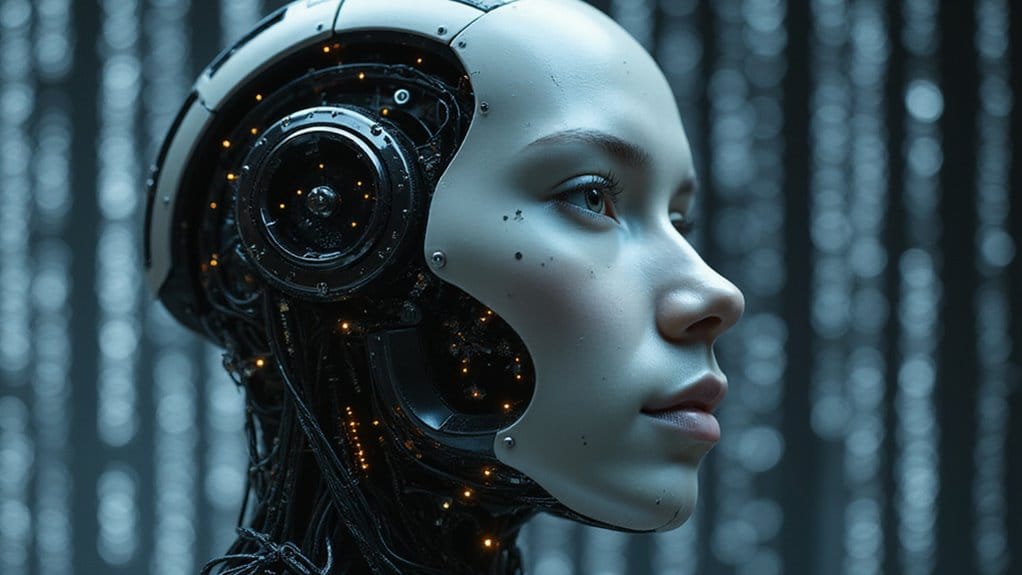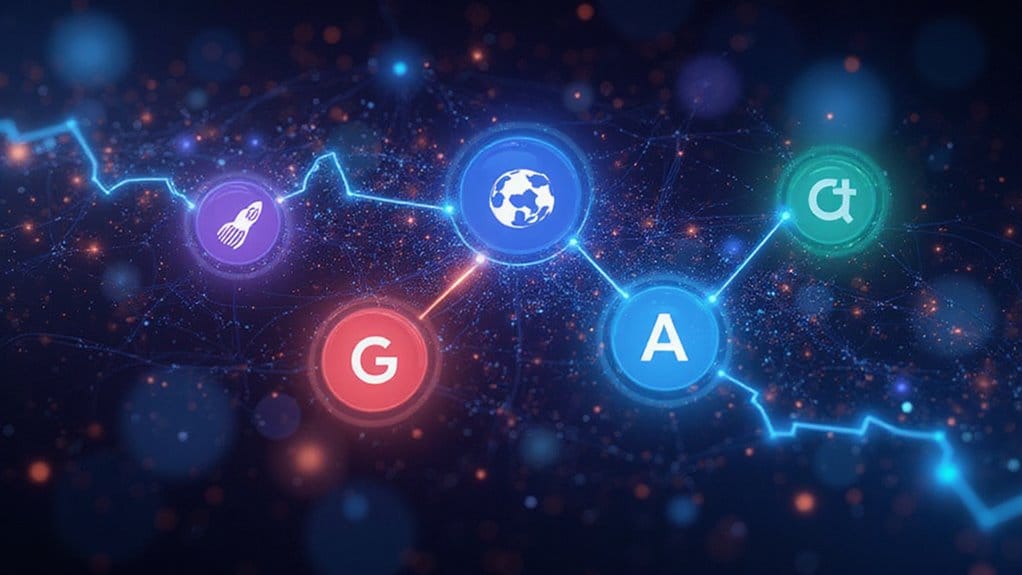Forget Hollywood magic; real AI is not some all-knowing oracle. It’s narrow intelligence—clever but focused on specific tasks like translating or recognizing faces. Sure, it’s impressive, but don’t expect it to whip up a gourmet meal. General intelligence, the holy grail that mimics human thought and emotion? It’s still just a fancy dream. Be careful, though, flawed data can lead to biased results. Stick around to uncover more about how AI truly operates.

Have you ever wondered what makes artificial intelligence tick? Well, buckle up, because we’re diving into the fascinating domain of AI, where the terms “Narrow Intelligence” and “General Intelligence” come into play.
Narrow Intelligence, as the name suggests, is like that one friend who can ace trivia but struggles with basic cooking. It’s designed to perform specific tasks, like translating languages or recognizing faces. Impressive, right? But don’t expect it to whip up a gourmet meal or solve complex philosophical dilemmas—that’s just not its jam.
Now, let’s talk about General Intelligence. This is the holy grail of AI research, the elusive dream that aims to mimic human-level intelligence across all tasks. Picture a robot that can not only beat you at chess but also understand your emotions and help you navigate life decisions. Spoiler alert: we’re not there yet.
While Narrow Intelligence is making waves in various fields, General Intelligence remains a tantalizing concept, existing only in the domains of science fiction—so don’t hold your breath.
The backbone of AI includes technologies like machine learning and neural networks. Machine learning allows machines to learn from data without explicit programming. Think of it like teaching a child to ride a bike. You don’t just say, “Go ride.” You guide them, let them fall a few times, and eventually, they learn to balance. Machine Learning is a crucial aspect of AI that enables systems to adapt and improve over time, especially when avoiding human biases in decision-making.
But here’s the kicker—if the data is flawed, the model can develop biases, which is a major pitfall.
Neural networks, on the other hand, mimic the human brain’s structure with layers of interconnected nodes. They’re fantastic for pattern recognition but can be as complex as a Shakespearean play—good luck understanding all the subtleties!
Frequently Asked Questions
What Are the Ethical Implications of Using AI Technology?
The ethical implications of AI technology are vast and sticky.
Consider bias mitigation: if algorithms aren’t fair, expect discrimination.
Data privacy? It’s a ticking time bomb waiting to explode if consent protocols aren’t followed.
Let’s not forget accountability frameworks—who’s responsible when AI goes rogue?
Transparency standards can save the day, but job displacement looms large.
Remember, surveillance ethics matters too.
Get involved in these conversations; the future depends on it!
How Does AI Compare to Human Intelligence?
When comparing AI to human intelligence, it’s clear: machine learning can analyze data faster, but lacks the cognitive abilities humans possess.
Sure, AI can spot patterns like a hawk, but can it understand your feelings during a sad movie? Not a chance!
Humans adapt and generalize in unpredictable situations, while AI prefers neat, structured data.
Can AI Experience Emotions or Consciousness?
AI cannot experience emotions or consciousness, despite what some might think.
Yes, it can simulate emotional recognition—great for engaging users—but that’s not the same as feeling. The consciousness debate often misleads, as AI lacks genuine awareness.
So, before you start bonding with your chatbot, remember: it’s just a clever program. Stay grounded!
Recognize the limitations, or risk confusing your interactions with the digital world. Trust us, it’s better this way.
What Industries Are Most Impacted by AI Advancements?
AI advancements have revolutionized industries, particularly healthcare innovation and financial services.
In healthcare, AI detects diseases early and personalizes treatments—goodbye guesswork!
Meanwhile, financial services benefit from AI’s real-time data analysis, enhancing risk management and securing transactions.
Retailers, too, are not left behind, with AI tailoring shopping experiences.
The impact is undeniable; ignoring it could leave businesses in the dust.
How Can Individuals Learn to Work With AI Effectively?
To work effectively with AI tools, individuals must embrace collaboration techniques.
First, learn the basics—what AI can do and how it works.
Next, practice creating prompts that yield useful results.
Don’t shy away from asking for help; teamwork is key.
Regularly update your skills, because AI evolves rapidly.
And remember, if you ignore the ethical guidelines, you might end up with a biased robot—no one wants that!









